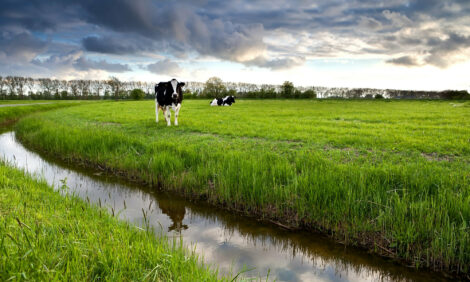



Rotavirus infections lower weaned-pig weights by a pound
Rotavirus infections in pigs have been around for decades. But in the last several years, the virus has re-appeared, causing diarrhea in neonatal and post-weaned pigs that impedes their growth for life.“Rotavirus persists in the environment, including the sow, and with different subtypes, and unfortunately, there’s no cross protection,” reported Cary Sexton, DVM, veterinarian with Four Star Veterinary Service, in Kinston, North Carolina.
Sexton works with many sow farms that find rotavirus an aggravating problem in neonatal pigs.
“We are definitely seeing more viral disease in general and diarrhea specifically in the first week post-farrowing,” he said. “Luckily, we don’t see a lot of mortality, just morbidity. But if producers have a minimum criteria for weight, reaching it can be an issue.”
Cost of rotavirus
Rotavirus diarrhea can cause at least a pound of weight loss per pig at weaning, according to Sexton.
“They are not maximizing their genetic potential,” he said. “Rotavirus causes a drag on pigs. It also creates a bigger disparity between the top and bottom pigs in a group.
“We can also see a 2% higher reject rate with uncontrolled rotavirus…due to pig loss from thriftiness.”
Correct diagnosis
Because there are several subtypes of rotaviruses and other potential pathogens, Sexton stresses that producers should first obtain a diagnosis using correct sample types. Rotavirus A and C are most commonly found, but porcine epidemic diarrhea and delta coronavirus also show up frequently.
Rotavirus is preventable through sow vaccinations that produce maternal immunity in the baby pigs. Rotavirus B and C have limited vaccine options and, therefore, tend to be the hardest to control. Some research has looked at using feedback for developing immunity to rotavirus but with varied results.
Environment, management
Environmental strategies like cleaning, disinfecting and drying farrowing rooms can help reduce diarrhea caused by rotavirus but won’t eliminate it. Rotaviruses continue to persist in the environment, even with disinfectants. But thorough cleaning will reduce the viral load.
Proper sow and pig management also helps reduce the impact of C and other rotaviruses.
“Day 1 care is very important,” Sexton said. “Farrowing is one of the most stressful days for a pig. It needs to be dry, warm and the pig has the opportunity to ingest colostrum. Having the mother more comfortable increases the chances of success, too.”
He recommends minimal handling of the pigs during the first few days. “We get the pigs evened out by teat space in the first 24 hours and then leave them alone,” he said. “We don’t want people touching them until processing, which is between 5 to 7 days.”
If the diarrhea is not treatable, Sexton recommends supportive care with electrolytes to keep pigs hydrated, and make sure the sow maintains appetite and drinks adequate water.
“We’ve had some frustrations with rotavirus,” he said. “You can do different things, but you will never eliminate it. You need to evaluate how the pigs are getting the exposure and make changes in your operation to reduce its impact.”







